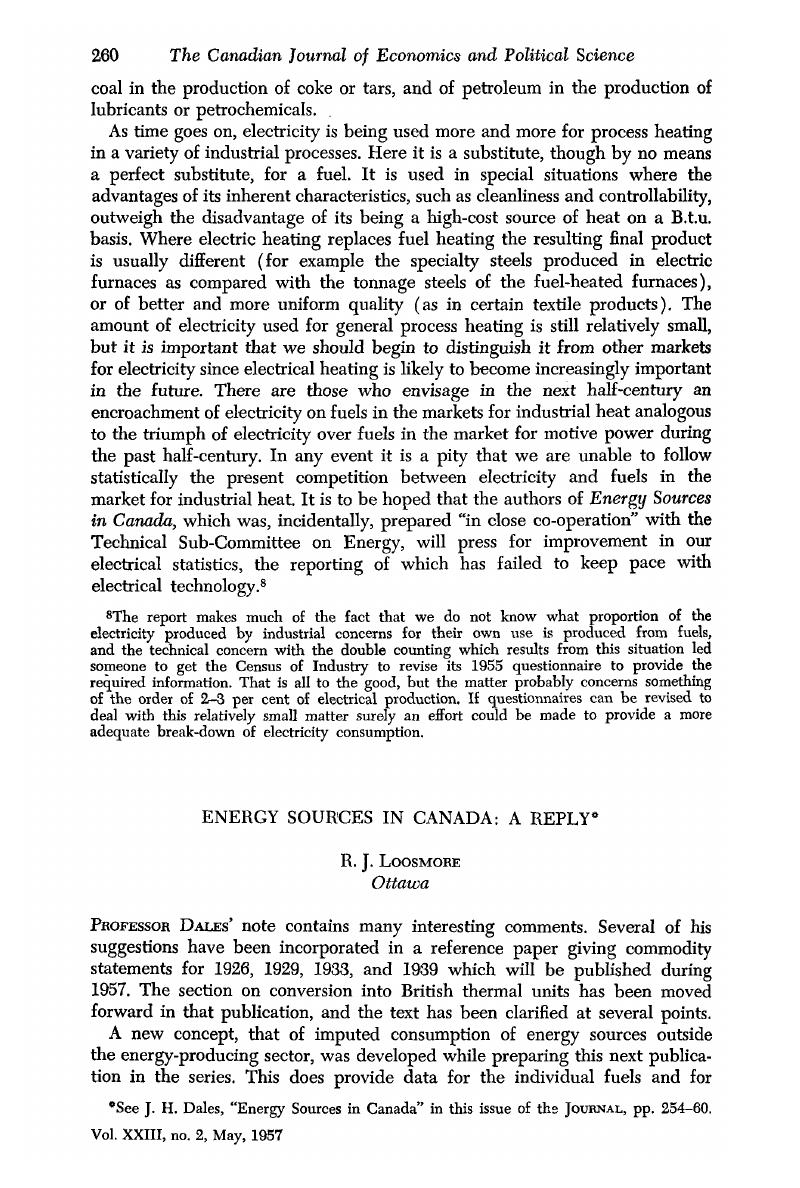No CrossRef data available.
Published online by Cambridge University Press: 07 November 2014

See J. H. Dales, “Energy Sources in Canada” in this issue of the Journal, pp. 254–60.
1 The nature of the project was temporarily changed after the data for 1948 and 1952 were first circulated in manuscript. The next step was a historical study for 1926, 1929, 1933, and 1939, to provide the basis for a long-run study of energy.
2 The amount of electricity used by individual manufacturing industries has been published in the annual Census of Industry reports since 1931, except for the years 1949 to 1952 inclusive, and 1954 and 1955. For these years, data are available. Any student of the use of electricity in Canada who wishes to break out any particular combination of industries can therefore do so.
A number of previously unpublished data in this field have been included in Reference Paper No. 73, Energy Consumption in the Manufacturing and Mining Industries of Canada, Selected Years, 1926–1953 (Ottawa: Queen's Printer, 1957, $1.00).Google Scholar This was prepared simultaneously with Reference Paper No. 69. The new data cover the regional distribution, by the major industrial groups, and so do not meet Professor Dales' main points. However, the relative importance of the non-ferrous metal products group of industries, which includes the major electro-processes, is shown. In Quebec, for instance, this group used 49.1 per cent of all the electricity consumed by manufacturers in that province in 1953.
3 Only D.B.S. officials have access to the original records. Special computations are, however, made where necessary.
4 The difference will clearly affect problems of industrial location, employment, and activity in the capital goods industries, to give a few examples. It will also affect the internal structure of the energy-producing sector, because the more processing a fuel undergoes, the more energy will tend to be consumed in the production of a fuel end-product of a given energy potential. See also “Energy Consumption and International Comparisons of Technological Development and Economic Change,” a paper delivered by N. B. Guyol to the annual meeting of the American Statistical Association in 12, 1955.Google Scholar
5 “Canadian Energy Sources,” Canadian Mining and Metallurgical Bulletin, XLVI, no. 494, 06, 1953, 339–59.Google Scholar
6 Earlier data will be given in a forthcoming publication, Reference Paper No. 74, Energy Sources in Canada: Commodity Statements for 1926, 1929, 1933 and 1939 (Ottawa: Queen's Printer, $1.00).Google Scholar
7 Table XX, 51. In this Table, the figures are presented in terms of tons of coal equivalent. This was done for purposes of exposition, after the original conversion had been made into B.t.u. on an energy-equivalent basis.
8 See “Fuel, Power, and Industrial Development in Central Canada,” American Economic Review: Papers and Proceedings, XLIII, no. 2, 05, 1953, 181–98.Google Scholar Notes on the analysis of the use of electricity appear on pp. 185–7. D. Schwartzman's comments on this paper are given on pp. 199–200.
9 See the monthly publication, Central Electric Stations (Ottawa: Queen's Printer, $1.00 per year).Google Scholar Data are reprinted in the annual Central Electric Stations (Ottawa: Queen's Printer, 25 cents).Google Scholar
10 A copy of the questionnaire used in 1953 is given in Reference Paper No. 73, p. 11. From 1956 on the same questions will be asked, plus a question on whether electricity was generated by water-power or by a thermal plant.